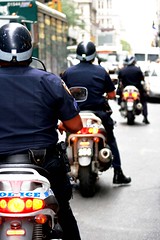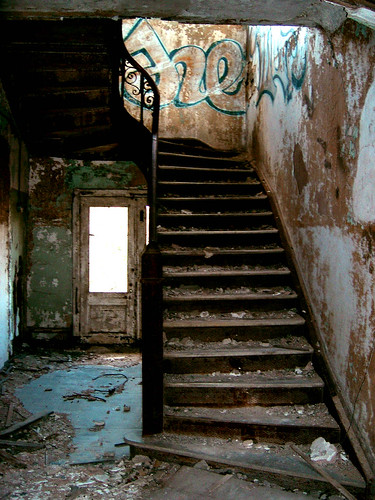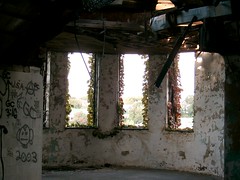 Breakthrough on 'broken windows' - In Lowell experiment, crime linked to conditions
Breakthrough on 'broken windows' - In Lowell experiment, crime linked to conditions
LOWELL - The year was 2005 and Lowell was being turned into a real life crime-fighting laboratory.
Researchers, working with police, identified 34 crime hot spots. In half of them, authorities set to work - clearing trash from the sidewalks, fixing street lights, and sending loiterers scurrying. Abandoned buildings were secured, businesses forced to meet code, and more arrests made for misdemeanors. Mental health services and homeless aid referrals expanded.
In the remaining hot spots, normal policing and services continued. Then researchers from Harvard and Suffolk University sat back and watched, meticulously recording criminal incidents in each of the hot spots.
The results, just now circulating in law enforcement circles, are striking: A 20 percent plunge in calls to police from the parts of town that received extra attention. It is seen as strong scientific evidence that the long-debated "bro ken windows" theory really works - that disorderly conditions breed bad behavior, and that fixing them can help prevent crime.
"In traditional policing, you went from call to call, and that was it - you're chasing your tail," said Lowell patrol officer Karen Witts on a recent drive past a boarded up house that was once a bullet-pocked trouble spot. Now, she says, there appears to be a solid basis for a policing strategy that preemptively addresses the conditions that promote crime.
 Many police departments across the country already use elements of the broken windows theory, or focus on crime hot spots. The Lowell experiment offers guidance on what seems to work best. Cleaning up the physical environment was very effective; misdemeanor arrests less so, and boosting social services had no apparent impact.
Many police departments across the country already use elements of the broken windows theory, or focus on crime hot spots. The Lowell experiment offers guidance on what seems to work best. Cleaning up the physical environment was very effective; misdemeanor arrests less so, and boosting social services had no apparent impact.Such evidence-based policing is essential, argues David Weisburd, a professor of administration of justice at George Mason University. "We demand it in fields like medicine," Weisburd said. "It seems to me with all the money we spend on policing, we better be able to see whether the programs have the effects we intend them to have."
And this particular study, he said, is "elegant" in how clearly it demonstrated crime prevention benefits.
The broken windows theory was first put forth in a 1982 Atlantic article by James Q. Wilson, a political scientist then at Harvard, and George L. Kelling, a criminologist. The theory suggests that a disorderly environment sends a message that no one is in charge, thus increasing fear, weakening community controls, and inviting criminal behavior. It further maintains
that stopping minor offenses and restoring greater order can prevent serious crime.
That theory has been hotly debated even as it has been widely deployed.
Critics have pointed out that defining "disorder" is inherently subjective. Some challenge "broken windows" success stories, questioning, for example, whether New York City's decrease in crime in the 1990s could have been caused by the decline in the use of crack cocaine or other factors.
Bernard Harcourt, a professor of law and political science at the University of Chicago who has been critical of broken windows policing method, called the Lowell experiment fascinating because it showed that changing the nature of a place had a stronger effect on crime than misdemeanor arrests.
"It helps practitioners,
Criminology.
The work has directly influenced policing in Boston, said police Commissioner Edward Davis, who was chief in Lowell during the study. In Boston, Davis has created "safe street teams" that target disorder in 10 crime hot spots.

"We've given them a special number at City Hall to call for removal of graffiti, any kind of disorder, any broken windows, any trash in the street," Davis said. "You have to prove to the officers it works, and doing this type of experimentation, having findings published, goes a long way."
The strategies continue to flourish across Lowell. "Sometimes, we create mini-task forces to saturate an area at a particular time of day when we see disorder," Lowell police Superintendent Kenneth Lavallee said. "We target those activities that could be a quality of life issue, like drinking, motor vehicle enforcement.
As Witts, the patrol officer, drove around the city last week, she pointed out evidence of success. A brick apartment building that once racked up 100 calls to police in a three-month period has, she said, had just one incident over the last six weeks. Gone, she noted, are the unregistered cars in the parking lot, the broken fence, and the code violations in the building - as
well as problem tenants and crime.
The Lowell study is not the only support being given to the broken windows theory. A second study, published in the journal Science in December, reported on how it held up in individual experiments in Europe.
In one, researchers staked out an alley in Groningen, Netherlands, where people parked their bikes. They attached fliers to handlebars in one setting that was clean, and one in which the walls were covered with graffiti. They found that only a third of the participants tossed the fliers on the pavement in the clean alley, whereas more than two-thirds did so in the less
orderly environment.
In a second experiment, researchers tried to stimulate a crime. Letters that clearly contained money were left sticking out of mailboxes, one in a clean neighborhood, and one in a neighborhood where the mailbox was covered with graffiti.

In the clean neighborhood, 13 percent of passersbys stole the envelope, while in the disorderly neighborhood, 27 percent did.
Beyond broken windows theory, psychologists are studying how the environment influences behavior and thinking.
"One of the implications certainly is that efforts that invest in improving the environment in terms of cleanliness may actually help in reducing moral transgressions because people perceive higher moral standards," said Chen-Bo Zhong, assistant professor of management at the Rotman School of Management at the University of Toronto. All of which plays out in the theory that Wilson and Kelling introduced in 1982.
"Think of how long it took," Kelling, a Rutgers professor, said of the latest evidence. "If you're a police executive or a policy executive, you can't wait 27 years - you have to make good policy decisions based on bad data and good theory and correlation.
Carolyn Y. Johnson can be reached at cjohnson@globe.
Live your values. Love your country.
And, remember: TOGETHER, We can make a DIFFERENCE!





















No comments:
Post a Comment